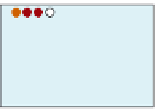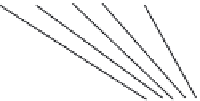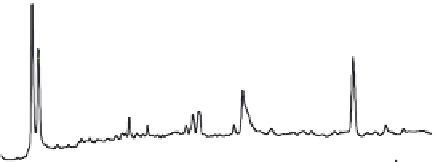Biomedical Engineering Reference
In-Depth Information
extracts may sufi ce to remove the tannins from the screening samples. A broader approach that
is applicable to samples derived from a variety of sources is diagrammed in Figure 6.8. This
HPLC-based method seeks to remove offending nonspecii c materials, as well as simplifying the
actual screening samples. As diagrammed in Figure 6.8, the natural products are concentrated,
often in the form of a solvent extract, and then subjected to a separation by reversed phase HPLC.
The compounds are separated by employing gradient elution and only the material contained in
the shaded area is retained for testing. This area contains components with polarities consistent
with drug-like properties, having eliminated the early-eluting highly polar compounds such as
saccharides and amino acids and the highly retained lipophilic materials that elute at the end
of the run. The area is divided into 10 fractions that are concentrated and plated for use in high-
throughput screening.
Fractionated screening samples derived from chromatographic separations as indicated in Figure
6.8 offer several advantages over crude extracts. The major one is the ability to independently
evaluate diverse components produced by a particular source organism. In cases where one com-
ponent in an extract is toxic, its adverse effect on the test organism in a phenotypic assay may
obscure the positive response of a second component. Actinomycetes are particularly notable in
their ability to produce numerous families of compounds. For example, it has been well documented
that
Streptomyces
species that produce the milbemycin class of macrolides, such as the previously
mentioned nemadectin, generally also produce oligomycins. The oligomycin macrolides are known
Concentrate
Microbial broth
Reversed phase
HPLC
7.
2
6
10
14
18
22
26
30
34
Plating for HTS
f1
f2
f3
f4
f5
f6
f7
f8
f9
f10
Crude
extract
~100X in DMSO
Screening
FIGURE 6.8
Prefractionation of natural products to generate improved samples for screening.









































































































































































































































